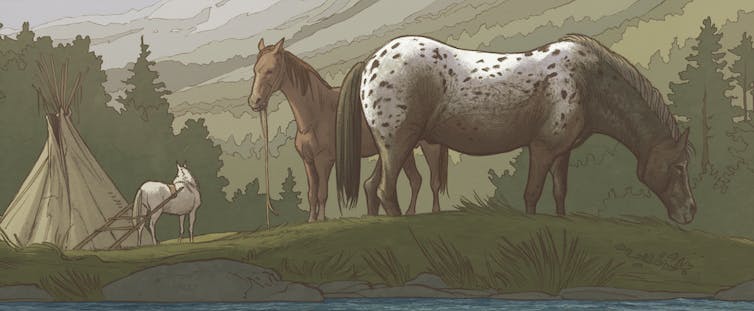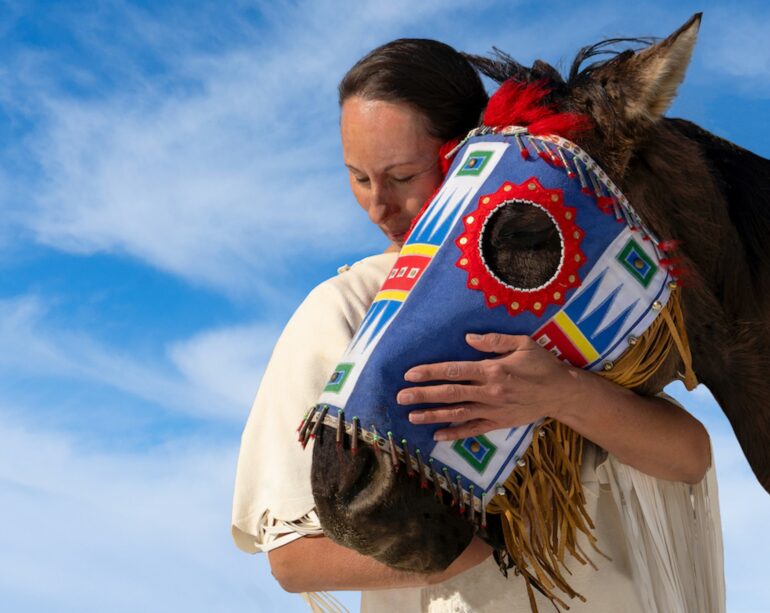Few places in the world are more closely linked with horses in the popular imagination than the Great Plains of North America. Romanticized stories of cowboys and the Wild West figure prominently in popular culture, and domestic horses are embedded in everything from place names, like Wild Horse Mesa, to sporting mascots, like the Denver Broncos.
Horses first evolved in the Americas around 4 million years ago. Then horses largely disappeared from the fossil record by about 10,000 years ago. However, archaeological finds from the Yukon to the Gulf Coast make it clear that horses were an important part of ancient lifeways for the early peoples of North America.
Millennia later, horses were reintroduced by European colonists, and eventually the Great Plains became home to powerful Indigenous horse cultures, many of which leveraged their expertise on horseback to maintain sovereignty even amid the rising tides of colonial exploitation, genocide and disease.
But how did horses become part of life on the Great Plains? And are there pieces of that story that may be missing from today’s popular narratives?
One of us is an archaeozoologist who studies ancient animal remains. The other is a Lakota scientist who specializes in ancient horse genomics and is expert in Indigenous oral traditions about horses. Together we created a large team of scientists and scholars from around the world, including those from Pueblo, Pawnee, Comanche and Lakota nations, and set out to see what archaeology, Indigenous knowledge systems and genomics together could tell us about the horse in the American West.

Horses have long been a part of Indigenous cultures in the American West.
Ettore Mazza
Complicating the colonial version of the story
Over recent decades, the story of people and horses has largely been told through the lens of colonial history. One reason for this is logistical – European settlers often wrote down their observations, creating documentary records that partially chronicle the early relationships between colonists, Indigenous cultures and horses in the colonial West. Another reason, though, is prejudice: Indigenous peoples in the Americas have been excluded from telling their side of the story.
While historical records are a valuable tool for understanding the past, they also carry with them the biases and cultural context of the people who wrote them. Perhaps unsurprisingly, many such documents tend to minimize or dismiss the interactions between Native people and horses. More importantly, the written record’s scope is limited to those places European colonists visited – which, until the 18th and 19th centuries, excluded much of the Plains and the Rocky Mountains.
Filtering of Indigenous horse cultures through a European framework left narratives unrecognizable to many Indigenous peoples.
Many models for the origins of Indigenous horse use on the Plains focus on one particular date: the…



